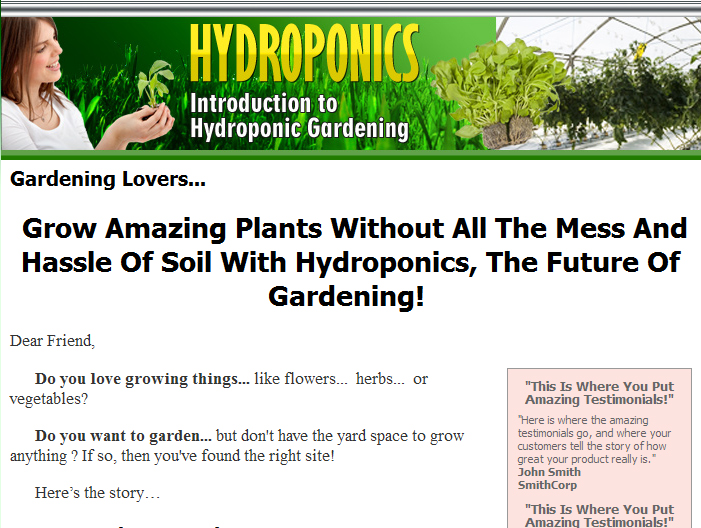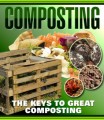Salespage Snapshot:

>>> Click Here To View Full Sales Page…
Table of Contents
INTRODUCTION
WHAT IS HYDROPONICS?
THE HISTORY OF HYDROPONICS
THE FUTURE OF HYDROPONICS
PROS AND CONS OF HYDROPONICS
GETTING STARTED WITH HYDROPONICS
DIY HYDROPONICS
TIPS FOR HYDROPONIC GARDENING
CONCLUSION
Sample Content Preview
Understanding Hydroponic Growing:
In order to understand home hydroponics, or commercial hydroponics, you have to get the basic principals down. It is also important to understand that as hydroponic farming becomes more popular, the systems and ways to grow hydroponic plants expands. Industrious and creative growers are always looking for new ways to grow plants and crops this way.
You probably know that when a plant grows, it requires light, carbon dioxide and oxygen. The root system of the plant needs water to carry the nutrients to the other parts of the plants. When plants are grown in the soil, the nutrients and water will seep into the soil and then the plant will use the root system to draw the water and nutrients into the plant to be used. This is what makes the plant grow and develop. The soil drainage will allow the water to be replaced by air in the gaps that are between each soil grain. These gaps will give oxygen back to the roots for the plant to grow.
Things work a little differently when dealing with indoor hydroponics. When this method of growing plants is used, there is no soil present. The hydroponic nutrients are dissolved in the water and the soil is replaced by another growing medium, which will supply the plant roots with the nutrients, oxygen and water that the plant needs.
In fact, when dealing with homegrown hydroponics, there are all sorts of supplies and things you can use to help your plants grow. Hydro juice, which is a popular hydroponic nutrient, can be used as a drip fed to each plant. In some hydroponic greenhouses, the hydro juice will be used to flood the root chamber and allowed to drain out of the system.
Needs of the plant:
All plants grow at a different speed and rate and what the plant is given to work with will certainly affect the growth rate. When you think about it, soil is really not necessary to make a plant grow. The root needs something to take in nutrients, but the soil only really serves as a way to hold the plant upright and in place. Given other materials in which to grow, the plant will grow just fine. Hydroponics is based on that principal—if you give the plant the basics that it needs to grow (the water, nutrients, oxygen), it will grow. When the hydroponic nutrients are given to the plant, it will flow freely to the plant roots and the roots do not have to grow or branch out to look for nutrients and water. The result is that the plant’s energy is spent growing the part of the plant that you want—the fruit or vegetable or the foliage. In fact, a plant that is grown using this method grows much faster, more efficiently and will have smaller roots and more foliage than plants grown in the soil.
Other Details- 30 Articles (TXT)
- 2 Ebook (PDF), 38 Pages
- 7 Part Autoresponder Email Messages (TXT)
- 1 Salespage (HTML, RTF)
- 3 Ecovers (JPG)
- File Size: 1,899 KB














